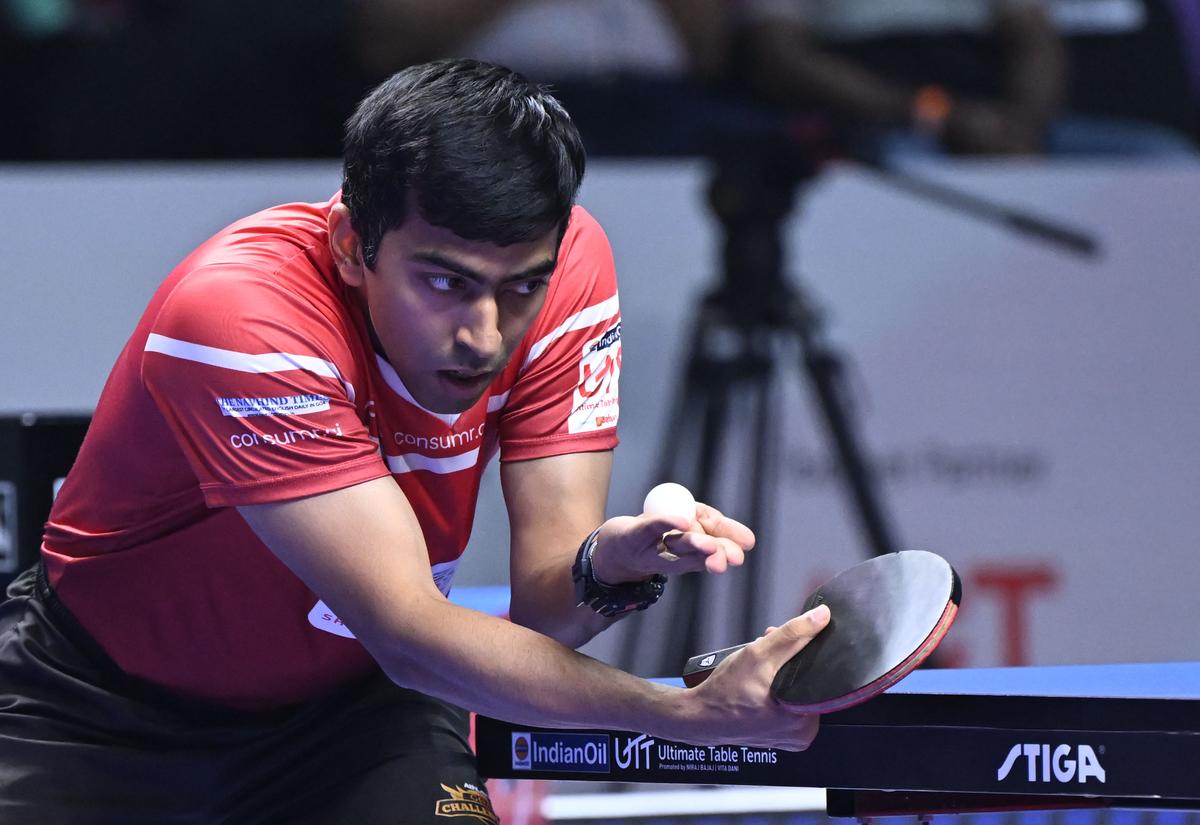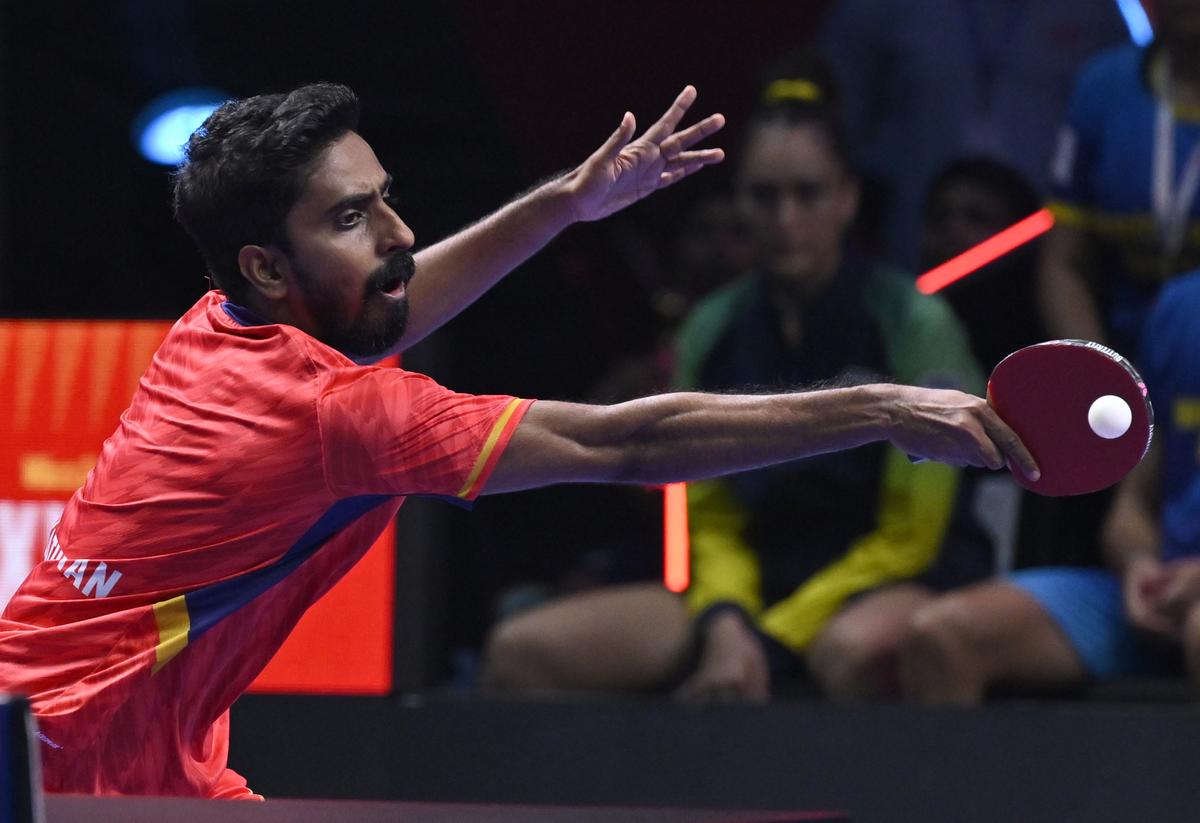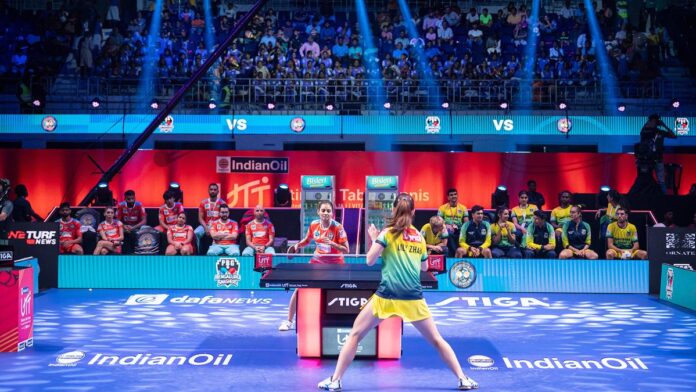Ever since the inception of the Indian Premier League, numerous franchise-based leagues have mushroomed in the Indian sporting ecosystem. However, only a select few, like the Indian Super League and the Pro Kabaddi League, have lasted even five editions.
In September, Ultimate Table Tennis (UTT) — a brainchild of Vita Dani and Niraj Bajaj, two corporate giants with a personal interest in the sport — joined the rare list. UTT has stayed afloat on either side of the global pandemic primarily because of the co-promoters’ passion for the game.
An array of experiments
In fact, with the addition of two teams for the fifth edition — which concluded in Chennai earlier this month — the promoters are gung-ho about UTT being a “flourishing product”. The business of the league is a story for another day, but let us explore the sporting aspect for now.
During a five-season essay over seven years, UTT has attempted an array of experiments — from changes in the format to the squad composition to the player pool — in a bid to make the action around the 9’x5’ table more interesting with every passing edition.
The 2024 season was no different — the two new teams freshened things up. Athlead Goa Challengers — led by the dynamic Harmeet Desai — may have created history by becoming the first team to win multiple UTT titles — that too in successive editions — but the two new teams had contrasting debuts.
While Ahmedabad SG Pipers made it to the knockouts, Jaipur Patriots’ campaign was derailed even before the tournament began, with the diminutive Sreeja Akula being forced to pull out because of a stress fracture. S.F.R. Snehit’s knee injury made it even worse as the Patriots came close to being in contention for a spot in the Playoffs before fading away.
Ronald Redep, the Croatian coach of the Jaipur franchise, stressed on the need for a better player replacement policy. “They [UTT] tried roping in Archana [Kamath] but she told them she had retired, so there was no way we could have got a formidable Indian female paddler of the same stature, so there has to be a plan to ensure such events don’t rob a team,” Redep told The Hindu.
In fact, Redep went a step further and sought a replacement pool of overseas players, too, midway through the tournament. “I come from a country of four-million population where teamwork matters the most. We had a player who was just not interested in being a part of the team but I could not drop him because there was no replacement option available. If these issues are addressed, UTT will continue to grow even more.”

Possible fix: Harmeet Desai believes two player retentions, instead of one, and one coach retention, instead of none, will make UTT better. | Photo credit: Ragu R
Each of the eight UTT franchises had six players picked through a draft, including an overseas male and female paddler. In addition, each of the six existing franchises had been given the option to retain one player each season since the league’s post-COVID revival.
Attracting a wider audience
It results in each squad virtually having a new look — including the coaches — every season. While it may make the tournament a level-playing field, it ends up being detrimental from a follower’s perspective. For a sport like table tennis, with a very limited fanbase in India, identifying teams based on their star players may attract a wider audience in the coming editions.
Ahead of the next edition, it is imperative for the UTT organisers to expand the option of retention to two players ahead of the draft. Equally importantly, the option of retaining coaches should also be made available, especially considering the fact that the franchises have to pick from a central list of coaches made available to them.
Harmeet made no bones in seeking two player retentions and one coach retention for the next edition. “It will help because sometimes it takes time for the player to understand the coach and vice versa. If there is a ‘coach retention’ and more players are retained for the next edition, then the bonding would be much better,” said the Paris Olympian.
Veteran coach Elena Timina — who has been involved in each of the five UTT editions and was the Goa Challengers’ coach in the 2023 edition — played a perfect devil’s advocate to the coach retention demand, though.

Get them in: G. Sathiyan feels UTT needs more publicity to ensure a large number of people are drawn to the stadium to experience the action first-hand. | Photo credit: Vedhan M
“What if, of the eight teams, six are happy with their coaches and they are going to retain their coaches and the other two are not happy and they have to be stuck with the same coaches they have? So there are ways to think it over and there is time also,” she said.
While the retention policy will have to be debated by the technical officials involved in the league, the operations and marketing wings will have to think of innovative ways to attract spectators into the stands.
For each of the five editions so far, the UTT promoters have relied on the table tennis community — active and former paddlers, their friends and families — to ensure a sizeable presence.
With the manner in which the league’s revenue model is structured — franchises pay a lump sum per season to UTT, which bears all the expenses for the season — franchise owners have little incentive to spend further on marketing to attract spectators; the onus lies solely on UTT.
After trying out the caravan model for the first two editions, UTT has settled into a single-city model for the last three editions.
The in-stadia challenge
But Chennaiites — despite the aura of the legendary A. Sharath Kamal and his successor G. Sathiyan — preferred to stay away from the Jawaharlal Nehru Indoor Stadium for most of the 17-day event. In fact, with all the attention centred around creating a buzz through social media for the live telecast of the event, the in-stadia fans — a crucial element for a sport like table tennis — appeared to have been ignored.
With notional publicity and very little activation opportunities in the host city, most Chennaiites were unaware of the event being staged in their hometown. It resulted in empty stands for most of the days, despite the reasonable ticket pricing.
“We need to have more publicity. I think people were happy watching the stream. We are a largely improving sport. We should have more people come and experience it first,” Sathiyan said.
“The ones who watched the grand show wanted to come again. You would have to bring them once, and then they would know the league is organised in the best way possible. I think that would really create a good image. It will get better in the coming seasons.”
If the UTT promoters can strike a balance in addressing all of these issues, the sixth edition could well hit the ball out of the park.
Published – September 27, 2024 11:02 pm IST

